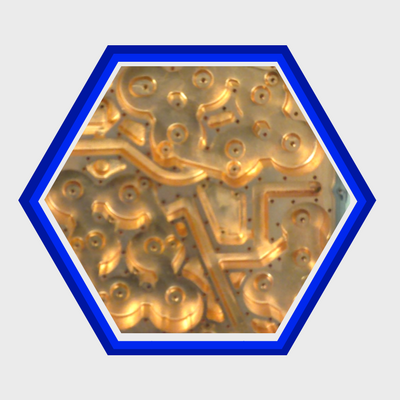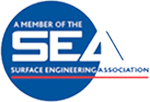3 Kinds of Copper Plating
.png)

.png)
Electro-plated Copper provides excellent thermal and electrical conductivity and is most often used to create a smooth base layer for other metal finishing processes such as Nickel and Chrome. There are a number of different processes in which Copper can be electroplated and Silchrome offer Acid, Cyanide and Pyrophosphate. These terms refer to the electrolytic solution in which a component is immersed. Here is a quick overview…
Acid Copper
Acidic Copper Plating is one of the more common kinds of Copper Plating used. Its electrolytic makeup usually consists of Copper Sulphate and Sulphuric Acid and as a process is generally easier to control and more stable than the other methods. Because this process it is acidic in nature, it is an unsuitable process on active metals such as Zinc Castings, Iron or Brass. The acid attacks these metals and the plating will not adhere properly and so as a general rule of thumb an Acid Copper process is unsuitable for any metal that precedes Copper in the electrochemical series. The other main disadvantage of this process is that it has a poor throwing power, meaning it will not adhere as well to the base metal. This means in order to achieve a desirable finish, components often need much longer plating times and possibly the addition of levellers to ensure consistent thickness. The main use of Acid Copper baths is to achieve thicker plating, as well as plating through holes and over trenches/ridges where over-plating may be a concern. It is also often used as base layer for Nickel/Chromium deposits.
Pyrophosphate Copper
Traditionally ‘Pyro’ Copper has been used in the plating of circuit boards, but is growing in popularity across industry as more companies begin to specify the use of non-hazardous and in this case specifically non-cyanide processes. Copper Pyrophosphate is dissolved in Potassium Pyrophosphate, and is essentially a non-toxic process that is mildly alkaline in nature, although it should be noted that Phosphate Ions are considered a controlled pollutant in some places.Pyrophosphate Copper is often selected where high ductility is desirable, and is also used as a lubricant for deep-drawing applications as well as plating steel components.
Cyanide Copper
The most popular of Electro-plating Copper techniques, Cyanide Copper is most often used to deposit a thin, smooth layer to cover the metal surface on an active metal before additional plating processes. Although Copper Plating an Iron nail has long been a staple of science lesson, it goes without saying that Cyanide is a hazardous material and should not be used by hobbyists. Cyanide Copper baths are Alkaline in nature and will generally plate more evenly with better adhesion than their Acid and Pyrophosphate counterparts.
SIlchrome Plating offer all 3 of the above Copper Plating processes and are completely ISO 9001 and 14001 accredited. We carry out our processes to a wide range of specifications and can change our chemistry to suit your needs. All of our processes are carried out in our modern facility in Leeds, West Yorkshire.




